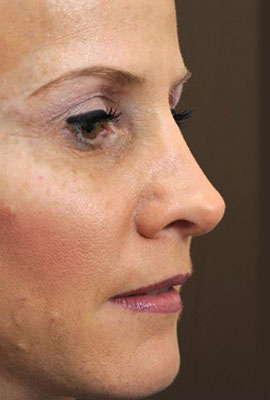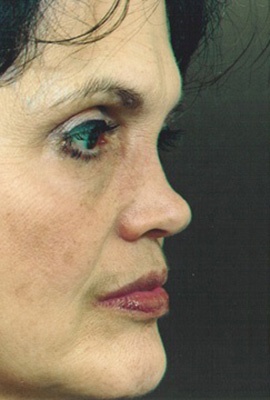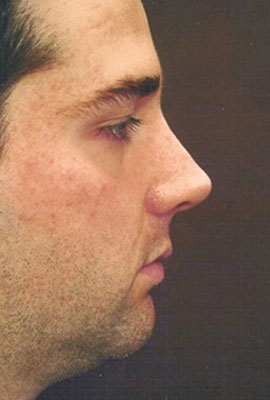Secondary Rhinoplasty Patient 01
Description:
Prior surgery had not corrected this patient’s profile or asymmetry. Septal cartilage was used to straighten the profile, open the airway, and improve symmetry; in severely deviated noses, perfect straightening is often not possible. I do not cut or re-fracture the septum in order to minimize the risk of collapse. Safety and function are more important than aesthetics.
Secondary Rhinoplasty Patient 02
Description:
Two prior rhinoplasties had left this patient with a sunken bridge. Rib cartilage has restored a narrower nose with a normal airway. This type of reconstruction will triple or quadruple the patient’s airflow, according to my published research in 600 patients.
Secondary Rhinoplasty Patient 03
Description:
This patient had a silicone implant placed in the bridge overseas; as commonly happens with silicone, the implant was starting to erode through the lining. Rib cartilage has given her a permanent reconstruction that is ethnically appropriate.
Secondary Rhinoplasty Patient 04
Description:
Prior surgery had left this patient’s nostrils deformed and bridge too low with a pointed tip. Rib cartilage was used to correct the bridge and tip; Cartilage and skin ‘composite grafts’ from the ear were used repair nostril height. His airflow quadrupled following surgery.
Secondary Rhinoplasty Patient 05
Description:
This patient had undergone multiple prior rhinoplasties. Rib cartilage was used to straighten her profile and open the airway. The postoperative views were taken 15 years later. I always try to achieve a lifetime solution for my patients.








































